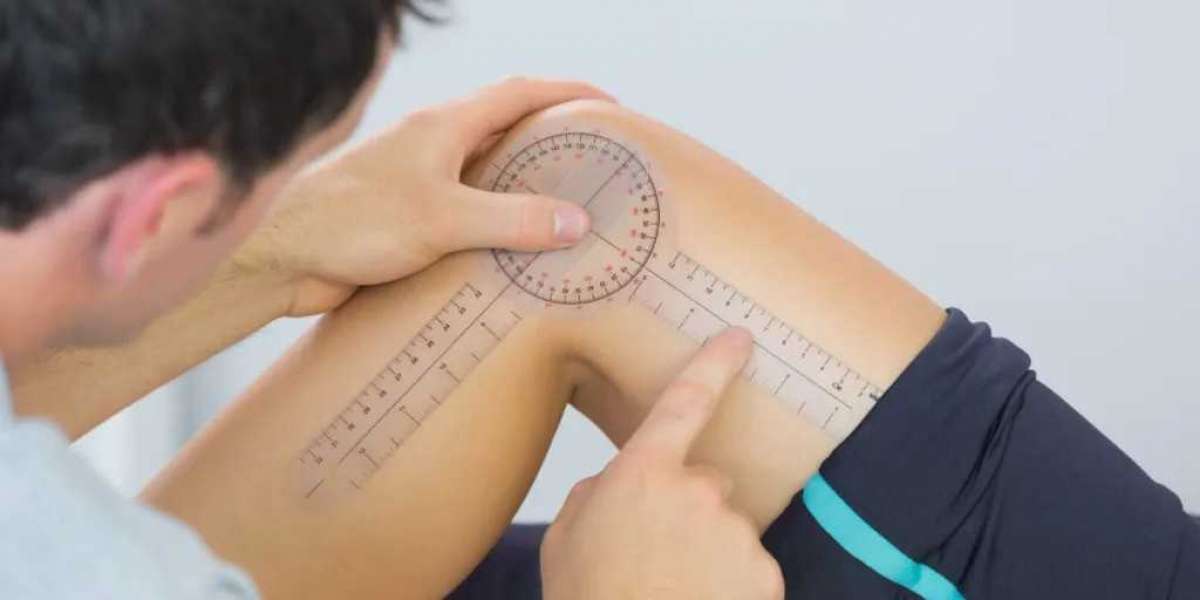The integration of technology into healthcare has significantly transformed the way injuries are treated and managed. From wearable devices to telemedicine, technology is playing an increasingly important role in injury recovery services, providing patients with more efficient, personalized, and accessible care. As healthcare systems strive to deliver better outcomes for patients, the use of technological tools in injury rehabilitation is creating new opportunities to improve recovery times, reduce costs, and enhance patient experiences. However, despite these promising advantages, there are several challenges that need to be addressed for the successful integration of technology in injury recovery services. This essay explores the benefits and challenges of incorporating technology into injury recovery and rehabilitation programs.
Benefits of Integrating Technology in Injury Recovery Services
1. Personalized and Data-Driven Care
One of the most significant advantages of using technology in injury recovery is the ability to provide personalized care based on data collected throughout the recovery process. Wearable devices, such as smartwatches and fitness trackers, can monitor various aspects of a patient’s health, including heart rate, body temperature, movement patterns, and muscle recovery. These devices can provide real-time data that healthcare professionals can use to tailor rehabilitation plans according to the patient's specific needs and recovery progress.
For example, wearable sensors can track the range of motion in a joint after a musculoskeletal injury, ensuring that rehabilitation exercises are performed correctly. The data collected can help clinicians monitor the patient’s recovery and adjust the intensity and type of exercises to avoid over-exertion, which could lead to re-injury. In turn, patients benefit from a more accurate, individualized recovery plan that maximizes healing while reducing the risk of further injury.
2. Remote Monitoring and Telemedicine
Telemedicine and remote monitoring have become particularly essential in the context of injury recovery services, especially during the COVID-19 pandemic. Patients can now have virtual consultations with healthcare providers, reducing the need for in-person visits. This is particularly beneficial for individuals who live in remote areas or those with mobility issues due to their injury. Virtual check-ins allow healthcare providers to assess the patient’s condition, discuss progress, and make any necessary adjustments to the rehabilitation plan without requiring the patient to leave their home.
Moreover, remote monitoring devices can track vital signs and recovery metrics, such as activity levels, pain scores, and adherence to prescribed exercises. This real-time data allows for more frequent adjustments to care plans and enables quicker interventions if any complications arise. In some cases, telemedicine has also facilitated group therapy sessions, allowing patients to connect with others who are going through similar recovery processes, providing both emotional and physical support.
3. Access to Rehabilitation Resources
Technology has democratized access to rehabilitation services, offering patients resources that may have previously been out of reach due to geographic or financial barriers. Virtual physical therapy (PT) platforms provide patients with guided rehabilitation exercises that can be accessed at home, enabling them to progress at their own pace. These platforms often incorporate videos, tutorials, and feedback systems to ensure exercises are done correctly. For individuals recovering from injuries like sprains, fractures, or surgeries, this level of accessibility to PT can improve engagement and adherence to prescribed recovery plans.
Additionally, mobile apps for injury recovery are becoming increasingly popular. These apps provide patients with step-by-step instructions for rehabilitation exercises, track their progress, and offer motivational features like reminders and rewards. The convenience of using such technology allows patients to take more control over their recovery, which can lead to better outcomes.
4. Cost-Effective Solutions
The use of technology in injury recovery services can also be a cost-effective solution for both patients and healthcare systems. Traditional rehabilitation methods often require frequent visits to physical therapy centers, which can incur significant transportation and treatment costs. Telemedicine, remote monitoring, and virtual physical therapy can reduce these expenses by eliminating the need for travel and offering more affordable alternatives for care delivery.
For healthcare providers, the use of technology can reduce the demand for in-person appointments and allow practitioners to monitor multiple patients at once, freeing up resources for other essential services. Furthermore, technology can help prevent complications or re-injuries, potentially reducing the need for more intensive treatments, surgeries, or extended rehabilitation periods, ultimately lowering healthcare costs.
5. Faster Recovery and Improved Outcomes
Technology enables patients to recover more quickly by providing consistent, evidence-based care. The ability to monitor a patient's progress and adjust the treatment plan in real-time helps avoid the delays that can occur with traditional in-person appointments. Additionally, technologies like robotic-assisted therapy and AI-powered rehabilitation programs can help patients recover more efficiently. For example, robotic exoskeletons used in physical therapy have been shown to improve muscle strength and motor control in patients with neurological injuries, while AI algorithms can create custom recovery schedules based on a patient’s injury and recovery speed.
Moreover, the use of virtual reality (VR) in injury rehabilitation has shown promising results. VR environments can immerse patients in therapeutic exercises designed to stimulate motor skills, reduce pain perception, and improve cognitive function. By providing interactive and engaging rehabilitation, VR can accelerate recovery while also making the process more enjoyable for patients.
Challenges of Integrating Technology in Injury Recovery Services
1. Data Privacy and Security Concerns
As injury recovery services become more technologically advanced, issues related to data privacy and security have become critical. Wearable devices, mobile apps, and telemedicine platforms collect vast amounts of personal health data, including sensitive information such as medical histories, physical activity levels, and real-time monitoring results. This data must be safeguarded to protect patient privacy and prevent cyberattacks.
If patient data is not handled securely, it could be exposed to unauthorized third parties, leading to potential breaches of confidentiality and trust. Furthermore, there is also the risk of data being used for purposes other than patient care, such as for marketing or commercial gain. Therefore, injury recovery services must implement robust security measures, comply with healthcare regulations (such as HIPAA in the United States), and ensure transparency regarding data usage to mitigate these risks.
2. Technology Access and Digital Literacy
While technology has the potential to improve injury recovery for many individuals, not all patients have equal access to digital tools. Disparities in access to smartphones, high-speed internet, and wearable devices can create barriers to effective recovery for certain populations. Older adults, for example, may not be as comfortable using new technologies or may lack access to the necessary devices.
Additionally, digital literacy plays a significant role in whether patients can fully utilize technological tools. For instance, some patients may struggle to navigate mobile apps or virtual consultations, reducing the effectiveness of these tools. This can result in frustration or decreased adherence to rehabilitation programs, ultimately impeding recovery. To address these challenges, healthcare providers must ensure that patients are trained on how to use the technology and offer alternative methods of treatment for those who may not have access or are not comfortable with digital platforms.
3. Cost and Accessibility of Technology
While technology can ultimately reduce costs in the long run, the initial investment required to integrate new technologies into injury recovery services can be high. Healthcare providers, especially in resource-constrained settings, may struggle to afford advanced technologies such as wearable devices, robotic therapy machines, or VR systems. In some cases, these technologies may be cost-prohibitive for individual patients as well.
In addition, the ongoing maintenance and updates required for these systems can add further financial burdens. Therefore, ensuring that technology is affordable, accessible, and sustainable is critical for its widespread integration into injury recovery services.
4. Lack of Personalization and Human Interaction
While technology can enhance the rehabilitation process, it should not replace the need for human interaction in injury recovery. The personal touch of a skilled physical therapist or healthcare provider is often essential for understanding the patient’s emotional state, providing encouragement, and making nuanced decisions about treatment. Technology, although efficient, cannot always account for the unique psychological or social aspects of recovery, which are often vital in achieving optimal outcomes.
Over-reliance on technology could result in a depersonalized experience for patients, potentially leading to a lack of motivation or feelings of isolation. Healthcare providers must ensure that technology is used to supplement, not replace, the human element in injury recovery services.
Conclusion
The integration of technology in injury recovery services has the potential to revolutionize how injuries are treated and managed, offering numerous benefits such as personalized care, remote monitoring, greater accessibility, cost savings, and faster recovery times. However, there are also challenges, including data privacy concerns, unequal access to technology, costs, and the need for continued human interaction. To maximize the benefits and minimize the challenges, healthcare providers must carefully consider how to integrate technology in a way that enhances the recovery process while addressing potential barriers to its adoption. By combining the strengths of both technology and human care, injury recovery services can evolve to provide more effective and equitable rehabilitation for all patients.






